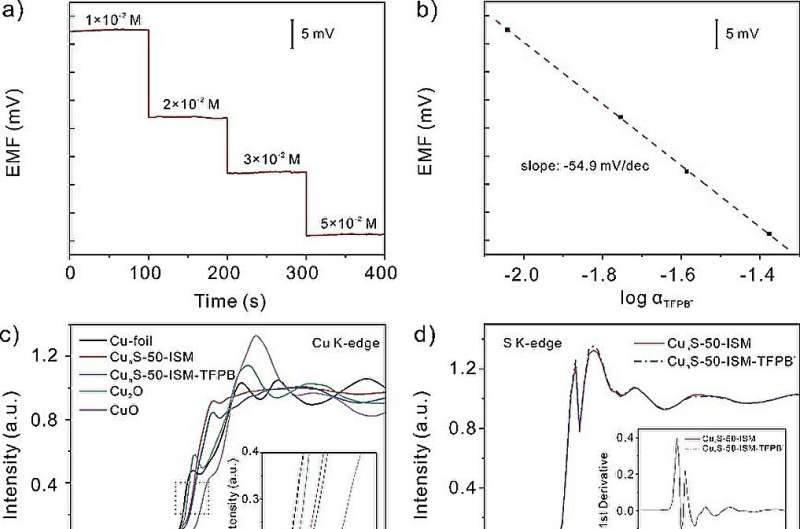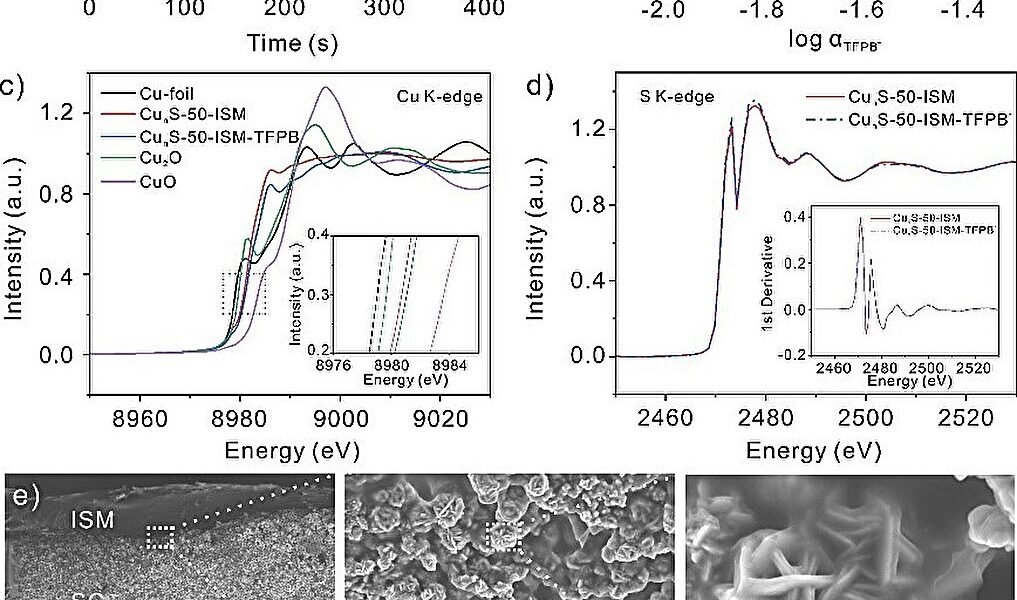Editors’ notes
This article has been reviewed according to Science X’s
editorial process
and policies.
Editors have highlighted
the following attributes while ensuring the content’s credibility:
fact-checked
peer-reviewed publication
trusted source
proofread
by Zhang Nannan, Chinese Academy of Sciences
<div data-thumb="https://scx1.b-cdn.net/csz/news/tmb/2024/researchers-report-new-2.jpg" data-src="https://scx2.b-cdn.net/gfx/news/hires/2024/researchers-report-new-2.jpg" data-sub-html="The transduction mechanism of CunS-50 participating in potentiometric response. Credit: Liu Zihao”>

A research team led by Prof. Huang Xingjiu from the Hefei Institutes of Physical Science of the Chinese Academy of Sciences constructed a highly stable solid contact calcium ion-selective electrode. They used synchrotron radiation technique to reveal the transduction mechanism by which the solid contact layer participated in the potential response.
The results were published in Analytical Chemistry.
Solid contact (SC) ion-selective electrodes (ISEs) are widely used in environmental monitoring and biomedical fields due to their fast response and high sensitivity. Stability is an important criterion in evaluating the performance of SC-ISEs. The capacitance and hydrophobicity of SC materials affect the potential stability. Therefore, researchers have focused on designing SC materials with large capacitance and high hydrophobicity and exploring the corresponding transduction mechanism.
In this work, a special sensor SC-ISEs was developed using copper sulfide (CunS-50) nanoflowers. The sensor has large capacitance and high hydrophobicity. Also, the sensor can accurately and reliably detect calcium ions (Ca2+).
The copper sulfide nanoflowers were synthesized by modification with surfactant. This modification not only made the nanoflowers more water repellent, but also enhanced their ability to store and release electrical charge.
The researchers also explained the transduction mechanism. The lipophilic anion participated in the redox reaction of Cu+/Cu2+ and promoted the generation of free electrons during the potentiometric response.
This work provides a deeper understanding of the transduction mechanism behind the potentiometric response and offers a new idea for the design of redox materials.
More information:
Zi-Hao Liu et al, Highly Stable Solid Contact Calcium Ion-Selective Electrodes: Rapid Ion–Electron Transduction Triggered by Lipophilic Anions Participating in Redox Reactions of CunS Nanoflowers, Analytical Chemistry (2024). DOI: 10.1021/acs.analchem.4c00590
Citation:
Researchers report new solid contact, ion-selective electrodes (2024, June 1)
retrieved 2 June 2024
from https://phys.org/news/2024-05-solid-contact-ion-electrodes.html
This document is subject to copyright. Apart from any fair dealing for the purpose of private study or research, no
part may be reproduced without the written permission. The content is provided for information purposes only.

How worms shaped Earth’s biodiversity explosion
13 hours ago

Meet Neo Px: the super plant that attacks air pollution
13 hours ago

A Chinese spacecraft lands on the moon’s far side to collect rocks in growing space rivalry with US
13 hours ago

Saturday Citations: The sound of music, sneaky birds, better training for LLMs. Plus: Diversity improves research
Jun 1, 2024

Study investigates a massive ‘spider’ pulsar
Jun 1, 2024

Greener, more effective termite control: Natural compound attracts wood eaters
Jun 1, 2024

Shear genius: Researchers find way to scale up wonder material, which could do wonders for the Earth
Jun 1, 2024

New vestiges of the first life on Earth discovered in Saudi Arabia
May 31, 2024

Mussels downstream of wastewater treatment plant contain radium, study reports
May 31, 2024

A new way to see viruses in action: Super-resolution microscopy provides a nano-scale look
May 31, 2024
Relevant PhysicsForums posts
More from Chemistry

